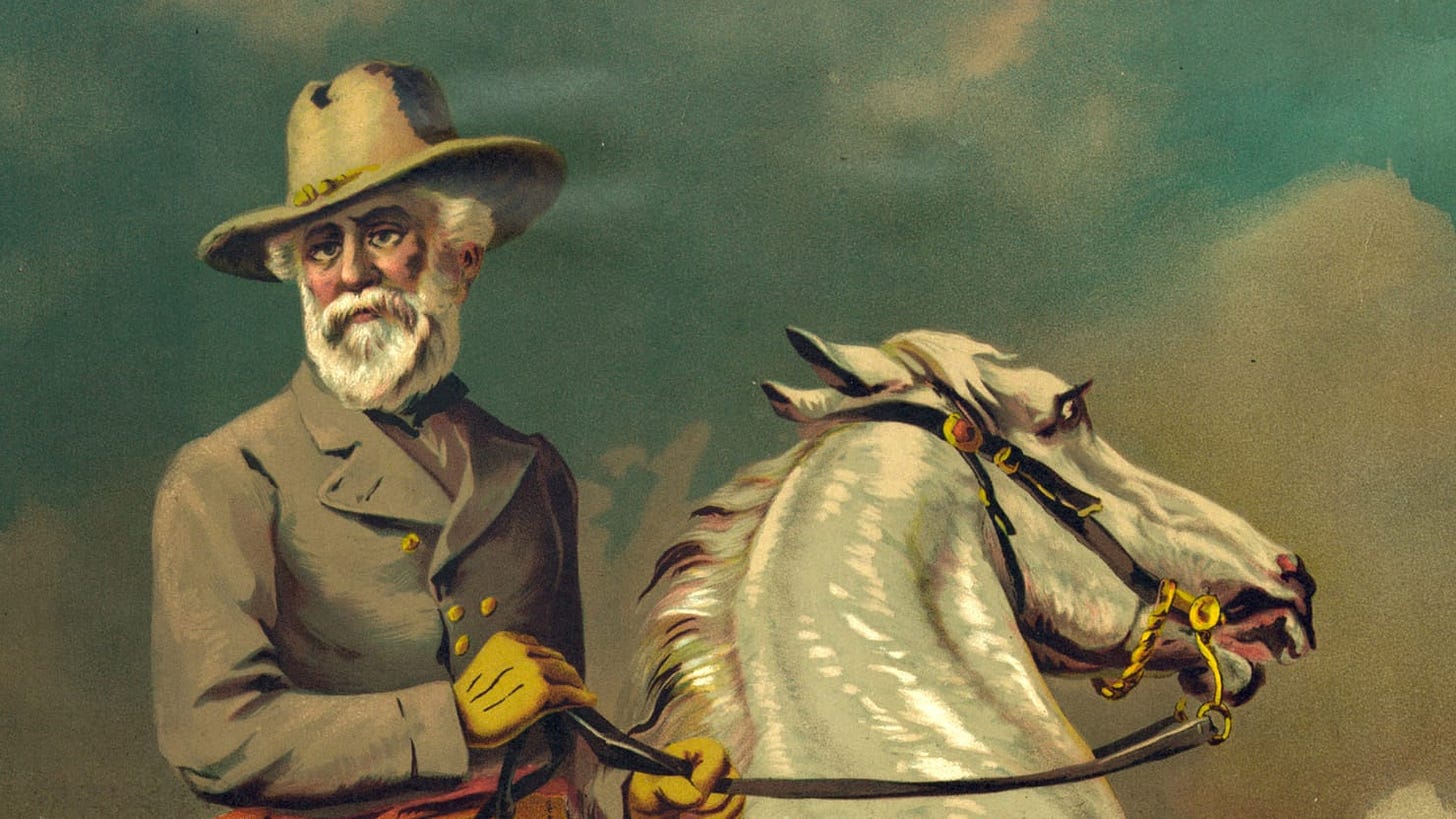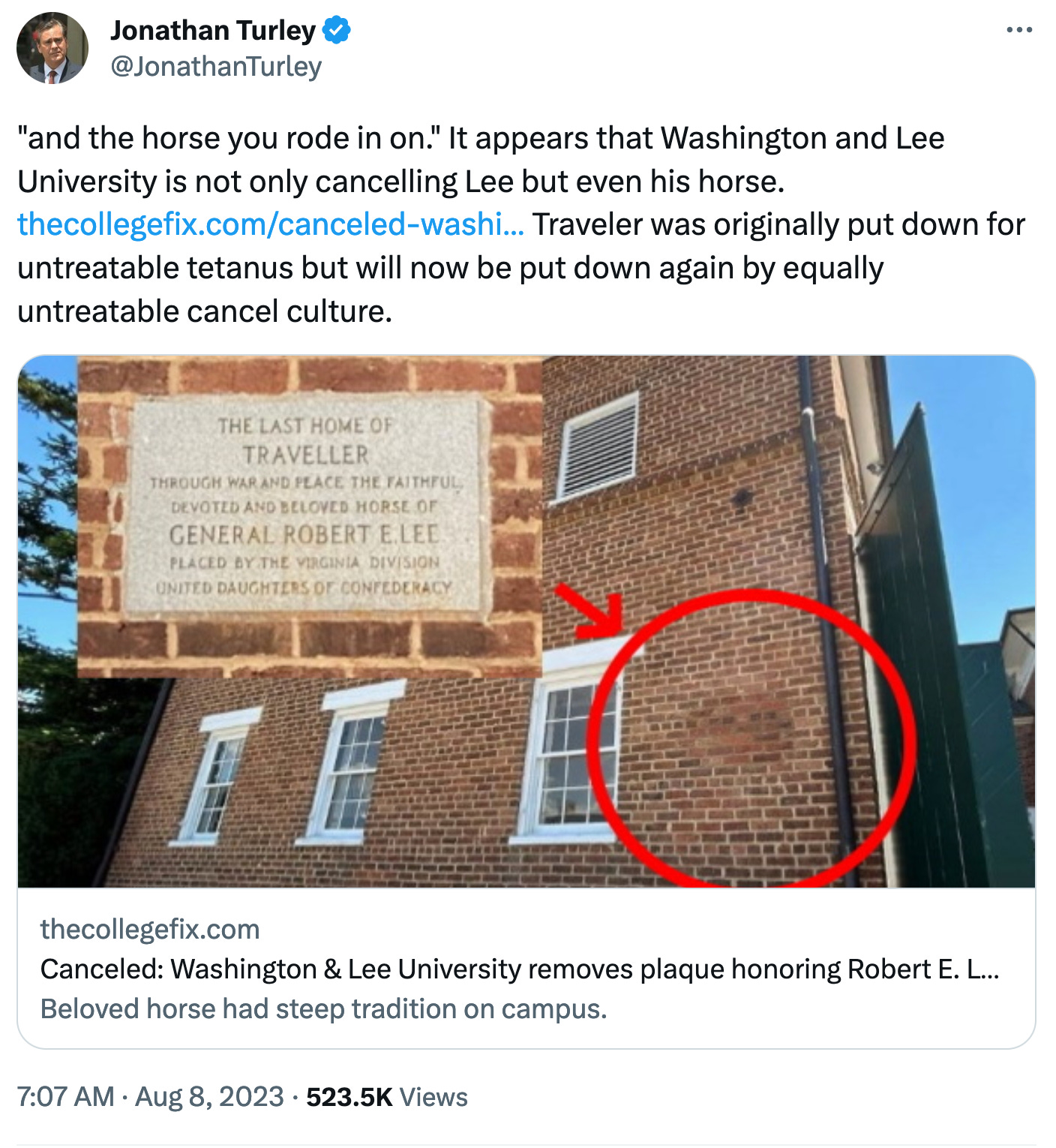The outrage has reached a fever pitch in certain circles this week over Washington & Lee’s decision to remove two plaques on campus that honor Robert E. Lee’s horse, Traveller. Yes, you heard that correctly. People are losing their marbles over a horse.
Even Jonathan Turley, a GWU law professor, who is one of the most vocal supporters of former President Donald Trump has chalked this up to an “untreatable cancel culture.”
The university has been transparent throughout its work to reinterpret sites on campus related to Robert E. Lee and the veneration of the Confederacy.
In fact, we need to move on from this misleading language of “cancel culture.” Nothing has been canceled. Robert E. Lee’s connection to the history of the school is in plain sight for anyone who is a serious student of history.
From a recent W&L announcement:
Four historical plaques relocated on campus this week are being installed along with other historically significant plaques in a new exhibit, located in University Chapel, titled “The Power of Memory: Remembering Robert E. Lee.”
The four plaques relocated include one from Payne Hall indicating where Lee took his oath of office as president of Washington College, another from Payne Hall identifying the room that served as Lee’s office from 1865-1868, and two dedicated by the United Daughters of the Confederacy to commemorate Lee’s horse Traveller located on the side of the Lee House garage and at Traveller’s gravesite outside the chapel.
As the Board of Trustees emphasized in its messages to the University community in June 2021 and September 2022, W&L is an educational institution and, as such, its campus is not a museum or an appropriate repository for Confederate artifacts. In keeping with this principle, over a year ago, the Board determined that these plaques should be relocated to educational exhibitions.
Traveller’s remains, at the location next to University Chapel, are untouched and a new marker to memorialize him has been installed at the same location. The other related plaques and interpretive signage at the site will also be updated.
The Traveller marker relocated from the Lee House garage will be replaced with a new marker at the same location in the near future that is consistent with other markers across our campus.
Beyond the campus of Washington & Lee, the National Park Service received 12 million dollars from philanthropist David Rubenstein in 2014, which it has spent rehabilitating and reinterpreting the former home of Robert E. Lee, located in Arlington National Cemetery. Visitors will now better understand the relatively brief period that Lee spent on the grounds, but also everyone else who lived on the plantation, especially the enslaved population.
I’ve visited twice in the last two years with teacher groups and I can say without question that the site interpretation is far superior than at any previous point.
You can learn about all the Lee men at Stratford Hall in Stratford, Virginia.
From their website:
Stratford Hall was home to four generations of the Lee family of Virginia. It was the boyhood home of two signers of the Declaration of Independence, Richard Henry Lee and Francis Lightfoot Lee, the only brothers to sign, and it was the birthplace of Robert Edward Lee.
Lee’s skill as a general and place in the military history of the Civil War is still front and center at many Civil War battlefields across the country, including Gettysburg, Antietam, Fredericksburg, Chancellorsville, Richmond, and Petersburg.
Finally, there is no shortage of books about Robert E. Lee. My recommendation is to start with Allen Guelzo’s recent biography. It’s well written and informed by a good deal of recent scholarship.
The history of Robert E. Lee is safe and sound and available for anyone to explore if they so choose. In fact, there is no better time to tackle someone as important as Lee than now, that is unless you choose to get sidetracked by complaining that institutions and communities across the country are no longer venerating or celebrating the man.
That’s a losing fight at this point, but let’s be clear that history is not being erased or hidden from public view. It’s time to move on.








The outrage I can live with; it's the lying (the plaques were moved, not thrown in the trash) that is tiresome.
Fainting couches aside, W&L's commitment to change is impressive.
We've got multiple Lee artifacts on exhibit in both Richmond and Appomattox and they're not going anywhere.